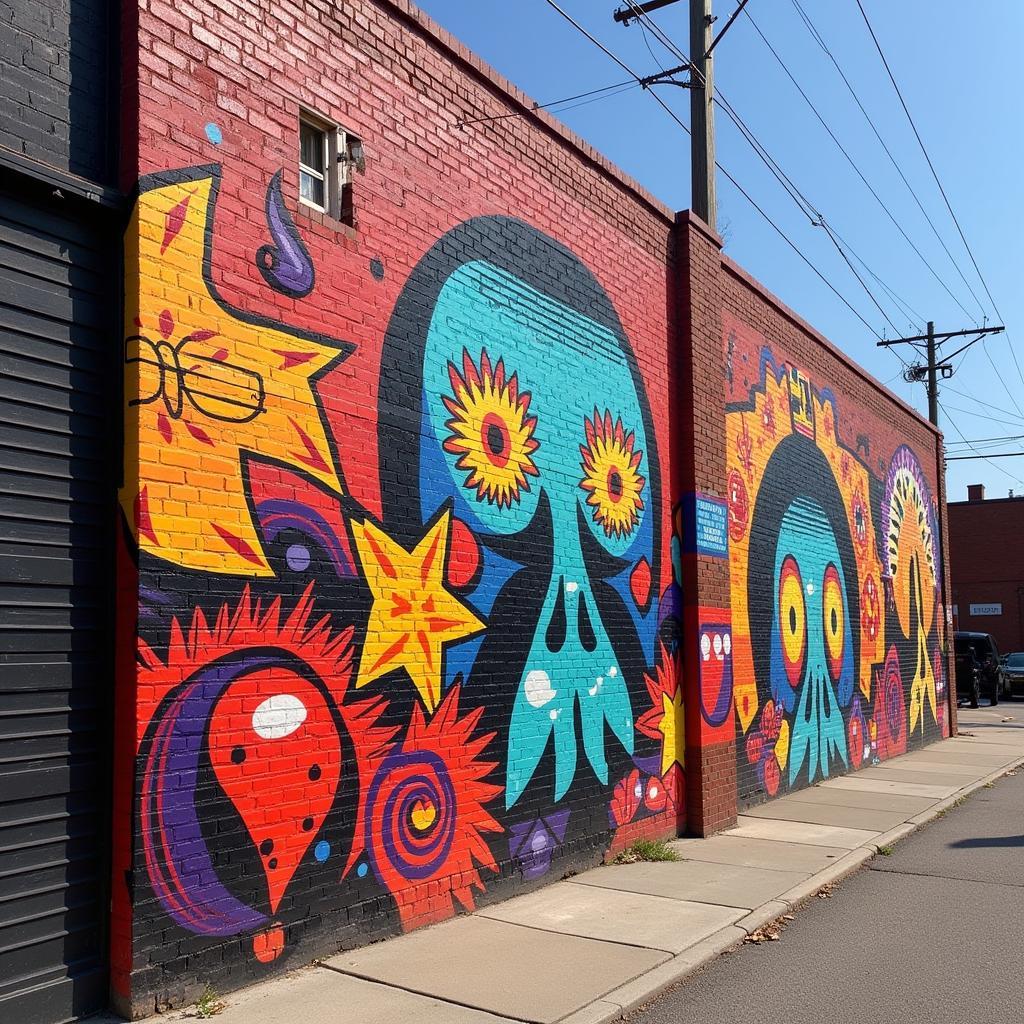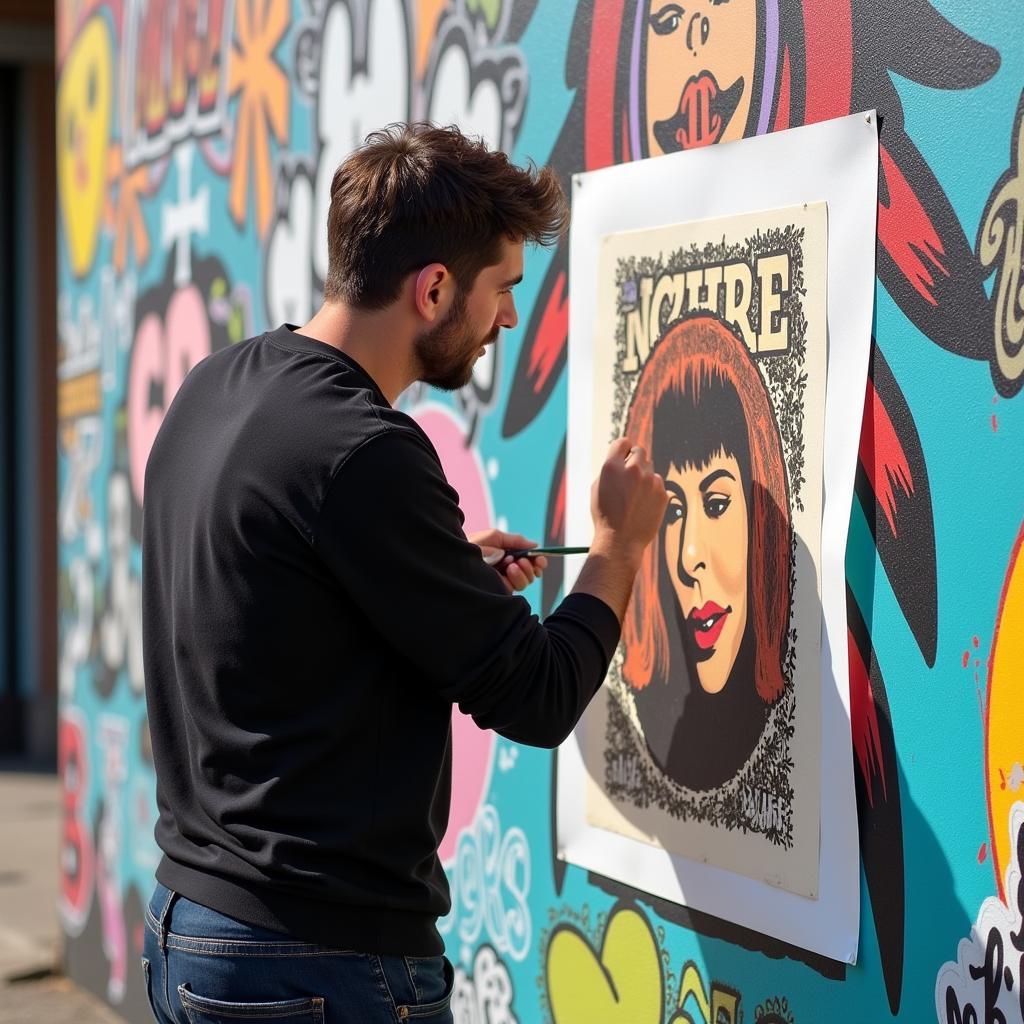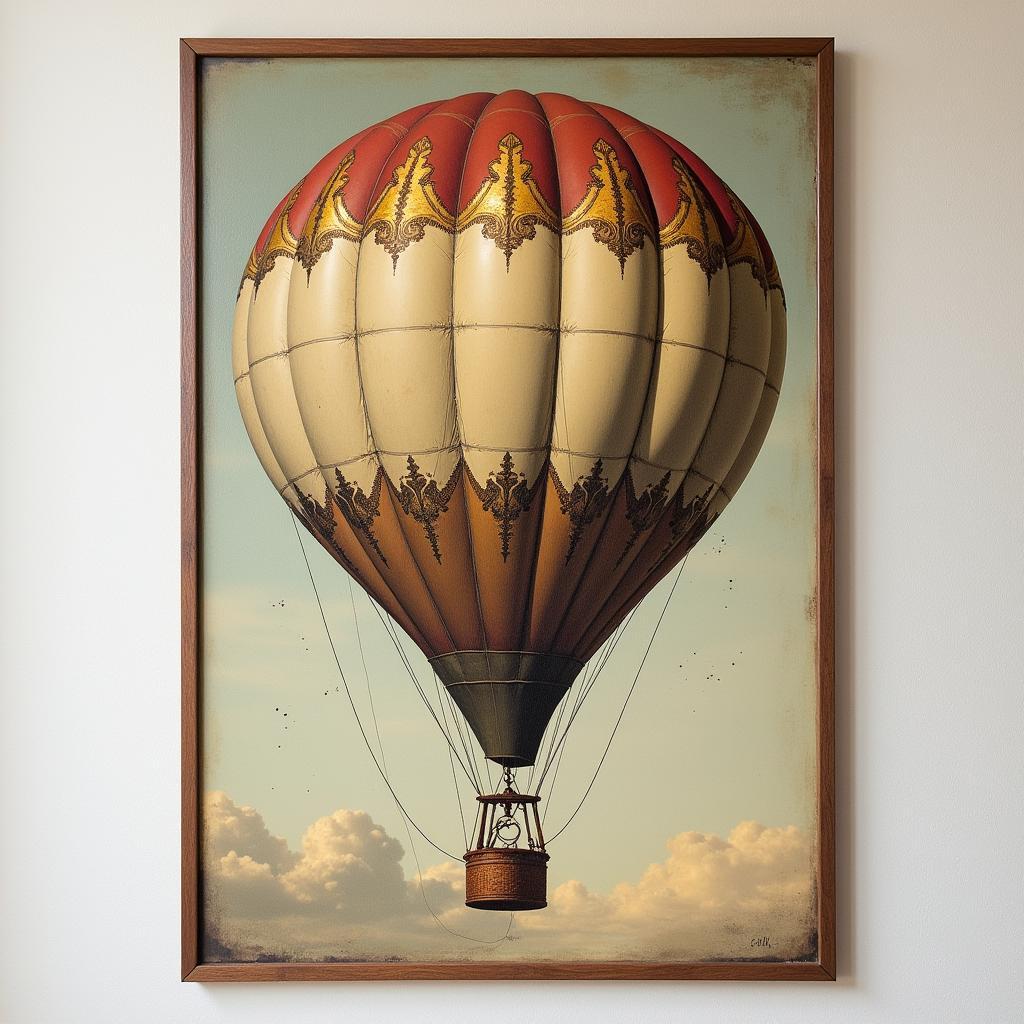Unleashing Creativity with Wheatpaste Poster Art
Wheatpaste Poster Art is a dynamic and accessible art form that transforms urban landscapes into vibrant canvases. It’s a powerful way to express ideas, share art with the community, and experience the thrill of ephemeral art. This guide delves into the world of wheatpaste poster art, providing insights, tips, and inspiration for both beginners and experienced artists.
Understanding the Power of Wheatpaste Poster Art
Wheatpaste, a simple mixture of flour and water, has been used for centuries as an adhesive. Its use in poster art dates back to the early 20th century, evolving from commercial advertising to a powerful tool for social commentary and artistic expression. The ephemeral nature of wheatpaste poster art, exposed to the elements and often lasting only a short time, adds to its unique charm and reinforces the idea of art as a living, breathing entity.
Why Choose Wheatpaste?
What makes wheatpaste poster art so appealing? It’s accessible, affordable, and allows for large-scale works in public spaces. The process is relatively simple: create your poster, mix your paste, and find a suitable surface. This immediacy and connection to the urban environment create a unique experience for both the artist and the viewer.
 Street Mural Created with Wheatpaste Poster Art
Street Mural Created with Wheatpaste Poster Art
Getting Started with Your Own Wheatpaste Project
Ready to dive in? Let’s break down the process of creating your own wheatpaste poster art.
Creating Your Poster
The beauty of wheatpaste lies in its versatility. You can use almost any paper, from newspaper to printer paper to large format prints. Consider the size, color, and overall design of your poster. Think about how it will interact with the environment where it will be displayed.
Mixing the Wheatpaste
The paste itself is easy to make. Combine flour and water, heating the mixture until it thickens to a glue-like consistency. Some artists add sugar or other ingredients to enhance its adhesive properties. Experiment to find the perfect recipe for your needs.
Finding the Perfect Spot
Choosing the right location for your wheatpaste art is crucial. Consider factors like visibility, foot traffic, and the overall aesthetic of the area. Be mindful of private property and local regulations regarding public art. Remember, the temporary nature of wheatpaste adds to its allure, so embrace the ephemeral aspect of your creation.
Applying Your Poster
Once you’ve found your spot, use a brush or roller to apply the wheatpaste to the wall, then carefully smooth your poster onto the surface, working from the center outwards to avoid wrinkles and air bubbles.
Tips and Tricks for Successful Wheatpasting
- Prep your surface: Cleaning the surface beforehand can improve adhesion.
- Work quickly: Wheatpaste dries relatively fast, so be prepared to apply your poster efficiently.
- Bring a friend: An extra pair of hands can be invaluable, especially for larger pieces.
- Embrace imperfections: The raw and slightly chaotic nature of wheatpaste art is part of its charm. Don’t be afraid of wrinkles or imperfections.
 Applying a Wheatpaste Poster to a Wall
Applying a Wheatpaste Poster to a Wall
Wheatpaste Poster Art: More Than Just Posters
Wheatpaste isn’t just limited to posters. Experiment with different materials, like fabric, photographs, or even found objects. The possibilities are endless. The key is to explore and push the boundaries of the medium.
“Wheatpaste is like a conversation with the city,” says renowned street artist, Anya Petrova. “It’s a way to inject your voice into the urban landscape and connect with people in a raw and immediate way.” Another artist, Marco Ramirez, adds, “The ephemeral nature of wheatpaste is a reminder that art doesn’t have to be permanent to be powerful. It’s about the moment, the experience, the interaction.”
Conclusion
Wheatpaste poster art is a powerful and accessible way to express yourself creatively and engage with the urban environment. From simple posters to complex murals, the possibilities are limited only by your imagination. So grab some flour, water, and your creative spirit, and start wheatpasting!
FAQ
- What is wheatpaste made of? Flour and water, primarily.
- Is wheatpaste poster art legal? Check local regulations regarding public art.
- How long does wheatpaste last? It depends on the weather and the surface, but generally a few weeks to a few months.
- What kind of paper should I use? Almost any kind, from newspaper to large format prints.
- Can I use wheatpaste on other materials besides paper? Yes, experiment with fabric, photos, and more!
If you need support, please contact us by Phone: 02462573573, Email: [email protected] or visit us at Savico Megamall, 7-9 Đ. Nguyễn Văn Linh, Gia Thụy, Long Biên, Hà Nội 10000, Việt Nam. We have a 24/7 customer service team.



